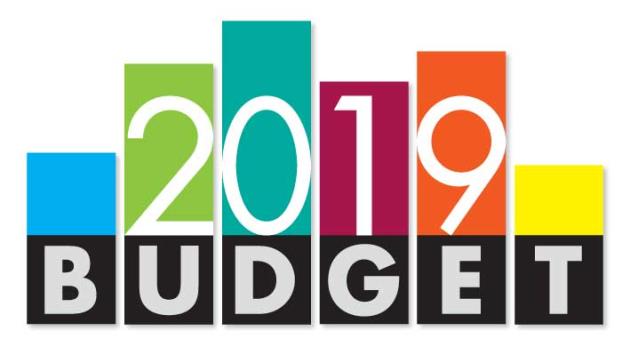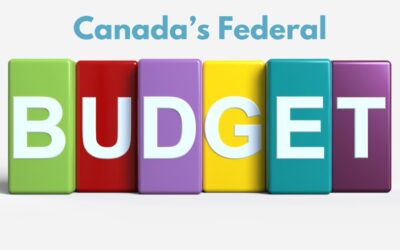Two weeks ago we saw the announcement of the 2019 Canada Federal Budget focusing on “Investing in the Middle Class”. When reviewing these budget items, remember that many of the amounts are long-term commitments, and since we’re in an election year there’s no guarantee that the Liberals will stay in power and these “promises” will exist next year.
But let’s take a look at how these new budget changes and programs can help YOU…
This budget is focused on young people, first-time home-owners, and Indigenous for the most part.
Investing In Canadians
For students with Canada Student Loans, they’re knocking down the interest rate from Prime+2.5% to Prime, allowing students to be able to pay down their loans faster after graduation and saving each an estimated $2,000 in interest.
One budget item getting a lot of press (and a lot of questions) is the assistance for first-time home buyers in the form of an interest-free shared equity loan with CMHC. Eligible first-time home buyers who have the minimum down payment (5%) for an insured mortgage can apply to finance a portion of their home up to 10% (for new home purchase) through this program, reducing their total mortgage costs and allowing for greater home affordability, especially given the new stress test mortgage rules introduced last year. Terms and conditions will be released by CMHC, but one of the major questions people are asking is what happens to the equity share upon the sale of the home? Does CMHC have first right to sales proceeds, or is this a forgivable incentive? This is up to CMHC to announce.
Also to help first-time home buyers is an increase in the Home Buyer’s Plan maximum withdrawal to $35,000 from $25,000. This is to address the increase in housing prices and therefore the increase in down payment requirements to access the housing market. The Home Buyer’s Plan allows a first-time home buyer to access RRSP funds without penalty for the purpose of their home purchase, however must repay those funds back over 15 years, or pay income tax on that year’s annual amount (1/15) at tax time.
With housing and the National Housing Strategy a top priority of this government, there are also additional construction initiatives to help in the building of more housing in low-supply regions.
Jobs is how you win elections, and they’re not left out of this election budget. A new non-taxable Canada Training Credit has been introduced to help Canadians with the cost of training, and is available to eligible works between the ages of 25 and 64. A credit balance would accumulate at $250 per year, up to a maximum of $5000, to be used to refund up to half the costs of training programs or courses. This credit balance would be available through CRA.
For workers who are training for a job, but not receiving their entire paycheque during that process, a new Employment Insurance Training Support Benefit is available through EI to help offset some basic living costs during that short-term training period up to 4 weeks.
Homeowners… are you looking to make efficiency upgrades to your home, such as replacing your furnace or installing renewable energy technologies? You could be eligible to repay efficiency upgrades through your property tax bills delivered through the Green Municipal Fund.
Improving Services for Canadians
Canada Revenue Agency also had a service review recently conducted and the following initiatives will be implemented in order to serve Canadians better:
Improved digital services:
- Canadians will be notified promptly as progress is made on their file, and will be able to view this progress online;
- Timely resolution to taxpayers’ objections;
- Disputes with the CRA will be resolved in a more timely manner, allowing the CRA to more consistently meet its published service standards.
Additional liaison officers: Right now, experienced auditors currently visit about 9,500 new unincorporated businesses each year to guide them through the tax assessment prior to filing their tax returns. CRA will broaden the reach and scope of this service, helping an additional 1,700 more businesses per year, including those that are incorporated.
Another area of investment and focus are social and health services for Canadians, with programs including:
- Investment in opioid crisis response including treatment, prevention, enforcement and harm reduction;
- Efforts to strengthen tobacco control;
- Healthy Eating Strategy, in coordination with the launch of the new Canada’s Food Guide;
- A National Dementia Strategy to address the almost 400,000 Canadians currently living with dementia, continuing the $4million per year investment from the 2018 budget to support community-based programs;
- Creating a Pan-Canadian Database for Organ Donation and Transplantation;
- Expanding health-related tax relief;
- Supporting a Pan-Canadian Suicide Prevention Service;
- Supporting persons with disabilities, including enhancements to the Registered Disability Savings Plan (RDSP);
- Expanding support for Artists and Cultural Events;
- Advancing Gender Equality by investing in women’s organizations;
- Supporting Canada’s Veterans and their families;
- Protecting public safety, including enhancing the integrity of Canada’s borders;
- Protecting vulnerable Canadians from Violence and Exploitation and Promoting access to justice;
There was a lot in the multiple hundreds of pages of the budget, so if there’s a specific area you’d like to know more about head over to budget.gc.ca for all the details.





0 Comments